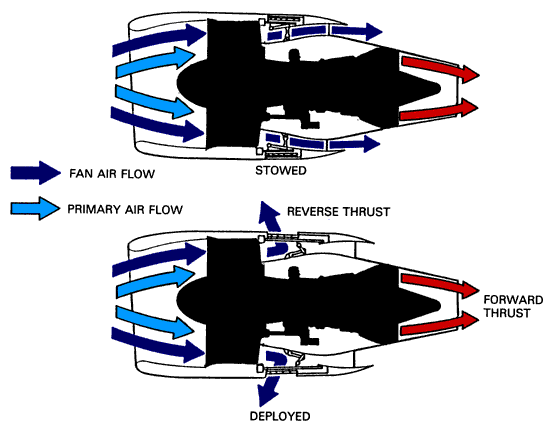|
||||||||||
|
|
||||||||||
|
||||||||||
|
|
||||||||||

When you fly, you've probably noticed that the engines are loudest just after the aircraft lands. This fact is particularly true on planes with rear-mounted engines like the Boeing 727 or MD-80. The reason for this increase in noise is that the thrust reversers have been deployed and are blocking the engine exhaust. This effect causes turbulence in the exhaust flow that creates the increased noise.
Though they are not necessary for landing, the reason thrust reversers are so common is that they significantly
reduce the distance needed to land an aircraft. Not only does this mean aircraft can land on shorter runways and
at smaller airports, but it also greatly reduces the time needed to stop the aircraft before it can begin its taxi
to the gate. The runway is cleared faster for other aircraft to land making the airport happy, the plane gets to
the gate faster making the passengers happy, and the aircraft can be turned around for its next flight more quickly
making the airline happy.
- answer by Jeff Scott, 7 January 2001
Related Topics:
Read More Articles:


|
Aircraft | Design | Ask Us | Shop | Search |

|
|
| About Us | Contact Us | Copyright © 1997-2023 | |||
|
|
|||